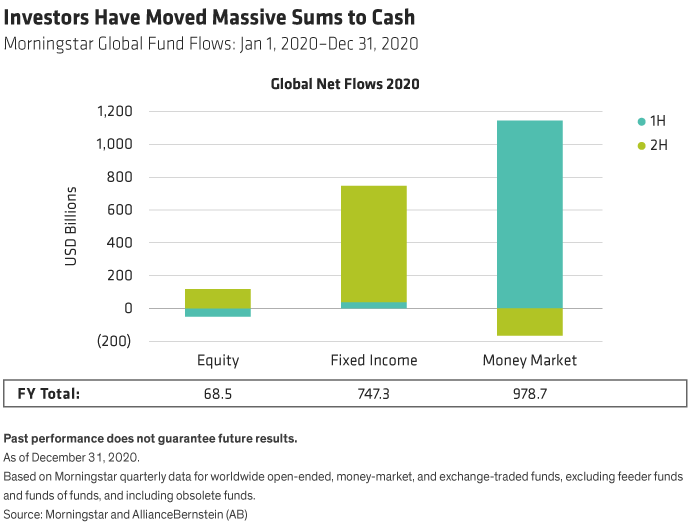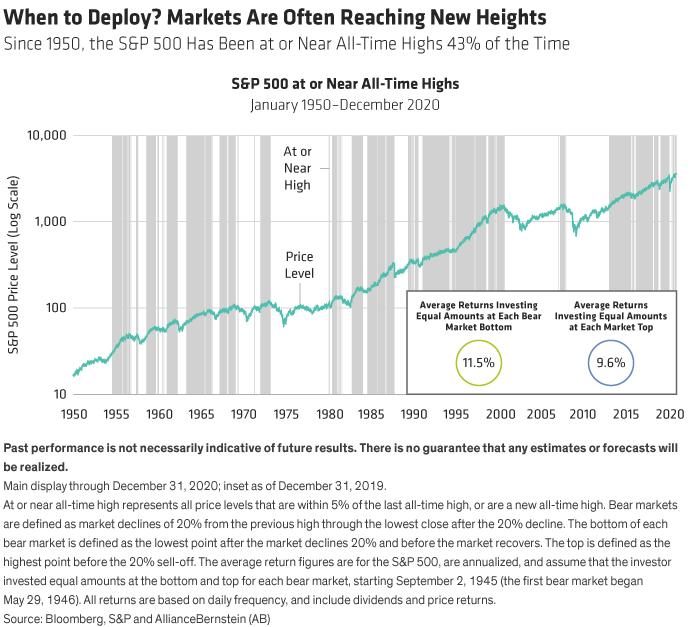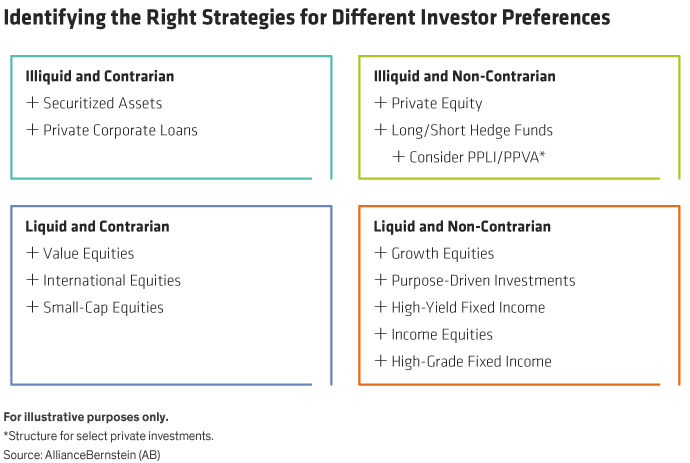Investors have parked record piles of cash on the market’s sidelines amid concerns about high market levels and volatility. But short-term safety comes at a price. By clearly defining long-term goals, investors can put idle cash to work with confidence, despite uncertainty about the path to recovery.
When markets crashed in early 2020, many investors liquidated holdings to cash. Yet during the subsequent rebound, relatively little cash was put back in the market. Net flows to worldwide money-market funds exceeded $978 billion in 2020, the highest in over a decade, outpacing flows to stock and bond funds, according to Morningstar data (Display). Despite some outflows from cash in the second half of the year, total money-market assets increased to a record $6.24 trillion in 2020.

Cash is comforting in uncertain times. It offers a safety cushion against unsettling bouts of volatility, which were common even in last year’s recovery. But cash is returning next to nothing with interest rates at record lows—and negative rates prevailing in many developed markets. So investors pay a steep opportunity cost for staying out of the market. Meanwhile, the steepening yield curve on US Treasuries in early February 2021 is widely seen as a sign of strengthening economic growth and corporate earnings to come.
Highs Don’t Always End in Disaster
For many investors, elevated markets are an obstacle to deploying cash today—particularly in US stocks, which climbed to new record highs in early February. However, our research suggests that equities have delivered solid returns over time, even for investors who entered the market when stocks appeared to have peaked.
In fact, since 1950, the S&P 500 has been at or near record highs in 43% of the time (Display). And if you invested equal amounts at each market peak, US stocks would have delivered average annual returns of 9.6%. That’s 1.9% lower than the returns generated by investing at each bear market bottom, but a solid outcome over time, in our view. In either case, with cash yielding 4.3% on average during this period, being invested consistently outperformed sitting on the sidelines.

Two Key Questions to Find the Appropriate Investments
Ready to redeploy your cash? Investors have a broad array of options at their disposal depending on their individual needs, risk appetites, and personal views about the markets. Two key questions can help frame the right investment options (Display):
1. Must your assets be liquid and accessible, or can you tolerate illiquidity?
2. Do you prefer consensus opportunities, or are you comfortable investing in unpopular, out-of-favor assets that may offer better valuations?

For investors who need liquidity, consider conventional equity and fixed-income funds. Investing in growth stocks was especially successful—and popular—in 2020, and so were “purpose driven” responsible investment strategies. High-yield fixed income offers access to an asset class that tends to be lowly correlated with equities and offers better downside risk reduction than stocks, as well as higher return potential than the high grade bond market.
Investors willing to swim against the tide may consider more contrarian portfolios. For example, underperforming value stocks showed signs of life in late 2020 and may stage a stronger rebound if an economic recovery accelerates. Value stocks trade at a discount to growth that hasn’t been seen since the tech bubble 20 years ago. Stocks outside of the US and small caps also did well late last year, and they often offer more attractive valuations than US peers.
Some investors might want to explore illiquid options. These could include private equity portfolios and hedge funds that have become consensus alternative investments in recent years, or they could include contrarian options such as securitized assets or private credit. Each taps a distinct return stream, while locking up funds for an extended period, which avoids volatile market swings associated with traditional investments in public markets and warrants a higher return expectation.
Better to Be Invested
Over time, most asset classes are likely to do better than cash, especially at today’s rates. And since it’s nearly impossible to time market inflection points, we think it’s better to be invested in the market rather than not—even in today’s fluid market conditions. With help from your financial advisor, investors can redeploy cash with conviction to selectively capture diverse sources of return potential, even as concerns about the future remain unresolved.
- Matthew D. Palazzolo
- Senior National Director, Investment Insights—Investment Strategy Group

